| 1 | Yellow anaconda |
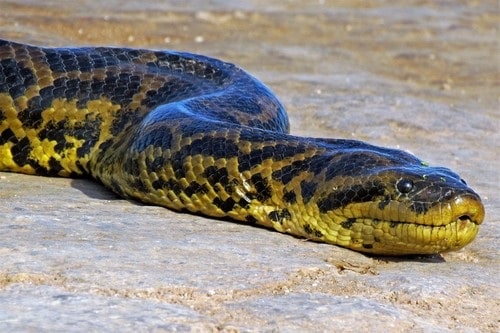
The yellow anaconda is the slightly smaller, yet still enormous cousin of the green anaconda, reaching a maximum of 4.6 meters, with a thick body for merciless constriction. This species lives further south than the green anaconda, primarily following the Paraguay river and its tributaries. This means that Paraguay itself is at the centre of its domain, alongside northern Argentina and Bolivia.
Yellow anacondas are found in wet areas of Paraguay, most likely lurking in shallow waters, or the edges of marshland, hoping to seize passing mammals, even dragging them underwater to drown them like a crocodile. Yellow anacondas are unusual among snakes in that a huge portion of their diet consists of wading birds, including Muskovy ducks and neotropic cormorants. If you send a stork carrying a letter to Paraguay and never get a response, then the yellow anaconda is probably to blame.
While yellow anacondas require water, they cope well with urban areas, even appearing in the Paraguayan capital of Asunción. This is an abundant snake in Paraguay, and is estimated to number several million worldwide. Virtually any large marshland in Paraguay could contain them, and they’re fairly easy to notice with their golden tones.
| 2 | Two-coloured mussurana |
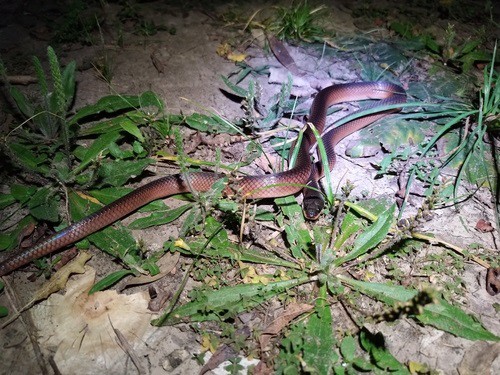
A nocturnal snake with powerful constricting abilities. This is a non-venomous species which humans can walk safely past without worrying about a surprise savage attack. The most they can achieve is squeezing your arm tightly if you pick them up.
The two-coloured mussurana (Mussurana bicolor) reaches a maximum of 99.0cm, and shares its habitat with the yellow anaconda: the Paraguay river, its tributaries, and its drainage basin. The two snakes often appear close by to each other.
Two-coloured mussuranas are fairly flexible, inhabiting riverside gallery forests, swamps and dry topical forests. Their diet is wide, including frogs, fellow snakes, small mammals and lizards, with a specific prey being the pointedbelly frog (Leptodactylus podicipinus). Mussurana bicolor also bites its prey while constricting, to secure an extra hold, and prevent a sudden burst for freedom. One two-coloured mussurana was spotted raiding a bat colony in the roof of a hostel, 2 metres high. Generally though, this species sticks to the ground. The shimmering red-black colours are a giveaway for this species, while their eyes are jet black.
Two-coloured mussuranas were originally placed in the Clelia family, alongside Clelia clelia, South America’s most infamous snake-eating snake. But in 2009, they were moved to the 3-member Mussurana family. Another study from eastern Argentina found a diet of 63% frogs and toads, and 37% lizards.
| 3 | Yellow-bellied liophis |
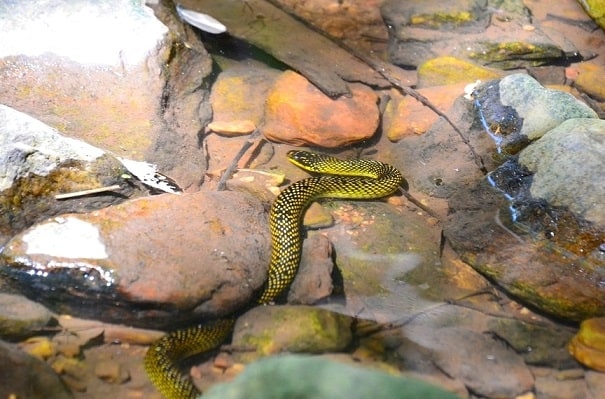
Part of the the huge, 55-member Erythrolamprus snake family, and probably the most common member. The yellow-bellied liophis (Erythrolamprus poecilogyrus) measures 70cm, and ranges from northeast Brazil to central Argentina, placing Paraguay squarely in the middle.
This is a venomous species, though not a dangerous one. A bite to a 1.71 metre tall victim in 2010 caused a swollen right hand, lasting 7 hours, and muscular pain spreading up the entire arm, which began to subside within 3 days. No antivenom exists, and its annual terror quotient is low. Yellow-bellied liophises occupy many habitats, including grassland, marshes, forests and occasionally urban areas. However, they require a water source, as this is a semi-aquatic species, like its close relative, the golden liophis of Uruguay.
Wherever it lives, this is a very common species. During a survey of southern Brazil’s Pantanal wetlands, scientists detected 33 snake species. Yellow anacondas and Brazilian smooth snakes ranked 2nd and 1st, but the yellow-bellied liophis was close behind in 3rd. According to a 2015 study from Argentina, over 98% of their diet is frogs and toads, the tiny remainder being lizards. The yellow-bellied liophis apparently tastes good itself, as it’s feasted upon by snakes like the venomous painted lancehead.
| 4 | False mussurana |
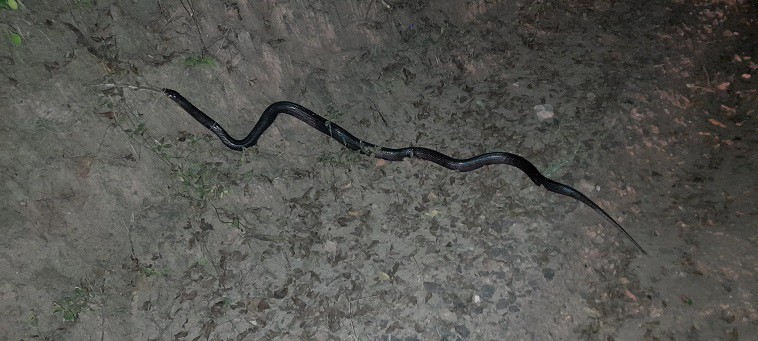
Another member of the mussurana clan, this has the most flexible habitats of all. Again, this is a constricting snake with a patternless black back in adulthood. Their belly varies from ivory to red, making some look like the red-bellied black snake of Australia. This species hatches at 35cm and grows to an adult length of up to 180cm.
False mussuranas (Boiruna maculata) appear all over the place in Paraguay: moist forests, dry chaco and parched desert alike. They were originally discovered in 1896 in Uruguay. This is a multi-skilled snake, combing powerful constriction with a nasty venom, whose properties are not fully understood. In 2021, a 50 year old man bitten on the first right finger experienced swelling from the fingers to upper arm. A small necrotic zone appeared around the bite. No antivenom was administered, because the scientists struggled to identify the species at first.
In a 2002 study, snakes comprised 33% of their diet, lizards 16.5% and mammals 12.5%. They have numerous confirmed snake prey, including forest flame snakes, Patagonian racers and the venomous crossed pitviper and South American rattlesnake (also on this list). One brown mussurana tried to hunt a Jaeger’s ground snake, but it was so thin that the mussurana couldn’t constrict it, forcing it to rely on its backup venom instead. Brown mussuranas are a popular species in captivity overseas.
| 5 | Leopard keelback |
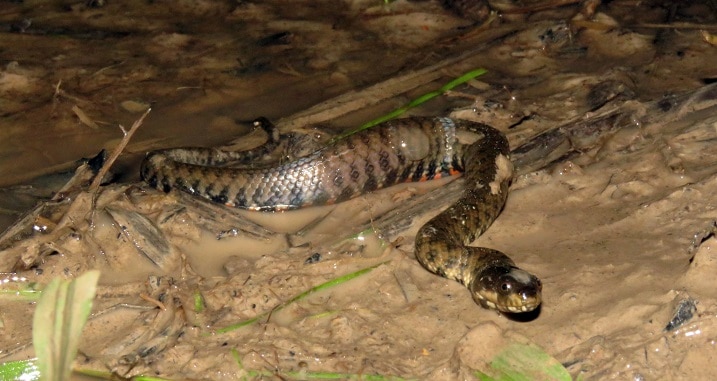
A nocturnal aquatic snake, which is a particularly strong swimmer, able to withstand fast-flowing currents. Helicops leopardinus particularly favours watery areas with plenty of floating vegetation. Their colours are variable, but always complex and boggy, as though they’ve absorbed the essence of a swamp. They reach a maximum of 1 metre and are considered by herpetologists to be aggressive.
Helicops leopardinus has dots all over Brazil, but their heartlands are far southern Brazil, northern Argentina and most of Paraguay. They particularly favour areas with floating vegetation. It’s very rare that you won’t find the leopard keelback dripping with water. This snake would die within minutes if dropped into the Mojave desert.
This is a very common snake in certain locations. In the study from Brazil’s Pantanal wetlands where the yellow-bellied liophis ranked third, the leopard keelback was the 5th most common of 33 snake species. Their diet is what you’d expect from a diehard water-lover: 62% fish and 38% frogs and toads. They’re able to hunt these prey at a variety of water depths.
Specific amphibian prey of the leopard keelback include lesser snouted tree frogs and pointedbelly frogs, also a prey of the two-coloured mussurana. All 20 Helicops members live in South America. The furthest afield is Daniel’s keelback (Helicops danieli), which just falls short of Panama (though hidden populations could lurk there).
| 6 | South American rattlesnake |
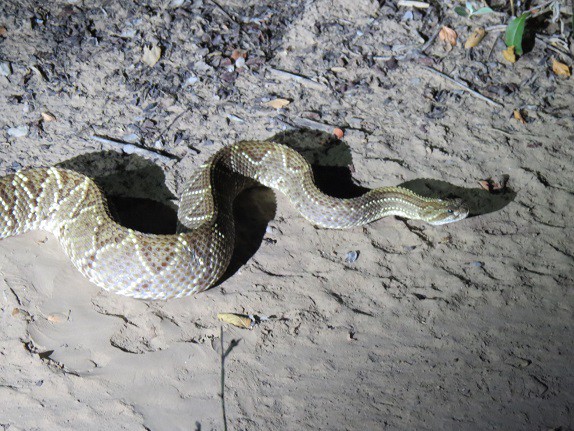
The only rattlesnake of South America. Crotalus durissus covers thousands of miles from north to south, beginning in Colombia and ending in central Argentina. Paraguay isn’t exempt from their lethal ways. This snake barely warns its victims before unleashing a strike, and can easily kill via kidney failure.
The image above was actually taken in Paraguay, so know what to look for – a thick viperid body and beige-grey viper patterns, with triangles that morph into a stripe along the neck. Search for the rough, crinkly scales.
Though this snake covers all of Central America, we have a report from a Paraguayan individual specifically: a herpetologist who suffered respiratory failure and only survived following antivenom administration. He also experienced a rise in bloodstream creatine kinase, a marker of muscle tissue damage. Crotalus durissus is rare among the 50+ rattlesnakes of the Americas in that it’s highly neurotoxic. Most specialise in haemorrhaging and necrosis, but Crotalus durissus can highjack brain signals and trigger limb paralysis and respiratory failure. Tiger rattlesnakes and Mojave rattlesnakes are another rare pair with this profile.
There are sightings of Crotalus durissus from all over Paraguay – no regions appear to be exempt. The confirmed record length is 1.9 metres, with an average of 1.5 metres.
| 7 | Wagler’s snake |
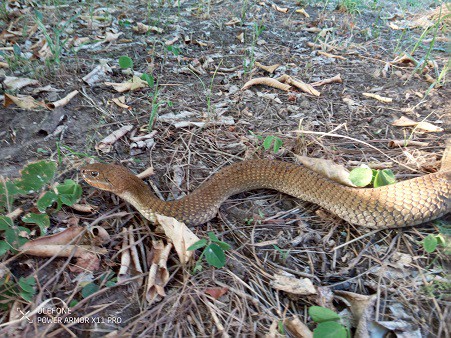
A copycat snake which attempts to mimic venomous crossed pitvipers in order to survive. This snake has the skill of eating poisonous amphibians like the common lesser toad, with enlarged adrenal glands that prevent the heart rate slowdown from bufotoxins. Wagler’s snake (Xenodon merremii) is common all over Paraguay and southeast Brazil, and reaches a maximum of 1.2 metres. They can inhabit forests or damper open areas, but always require water, as frogs are their main food source. This is a snake you can walk past without any worries. Their interest in amphibians is about 97%, and their interest in humans 2%.
Within Paraguay, Wagler’s snake has 4 distinct morphs: 1) banded pattern, 2) smooth (like above), 3) slightly marked, and 4) marked, the latter being the main viper-mimicking pattern, and the most common. All juveniles possess the marked pattern.
Analysis of its venom reveals toxins normally found in vipers, such as three finger toxins (3FTx) and snake venom metalloproteinases (SVMPs). However, a study tested 123 Wagler’s snake bites from São Paulo, Brazil. It found only non-lethal effects such as erythema, mild edema and pain. They concluded that “most accidents caused by X. merremii and X. neuwiedii present mild local symptomatology“. Wagler’s snake was milder for swelling than its cousin, Xenodon neuwiedii. Its venom is clearly targeted towards prey rather than deterring predators – hence why it must be a copycat.
| 8 | Rio tropical racer |
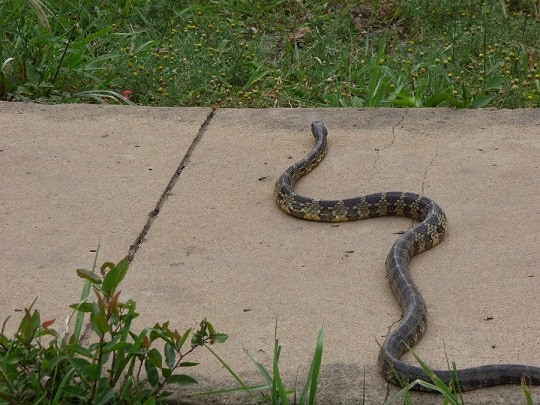
This snake is the sole member worldwide of the Palusophis family. Originally, it was categorised in the same Masticophis family as the salmon-bellied racer of central America, but it was split off in 2018 into an all new group. Rio tropical racers range from Bolivia to southeast Brazil, with most of Paraguay potentially containing them. Moist forests are their realm, particularly swampy areas, as swamp racer is an alternative title for them.
This is a fast and adventurous snake, not a lazy one which lurks under boggy swamp material. Palusophis bifossatus chooses from an ultra-varied menu. According to a 2007 study, its diet contained 44% frogs, 32% mammals, 16% lizards, 4% birds and 4% fellow sakes. Specific snake prey included a Patagonian green racer, and a 31cm black-headed snake (Tantilla melanocephala).
It’s common to see Rio tropical racers swimming through swamps with their heads bobbing up and down. They easily exceed 1 metre, and lay 4-24 eggs per batch. This species is far from invincible though. They have a particular tendency to lose their tail in adulthood, due to it ripping off in predators’ claws. A 1998 study on 119 museum specimens found that 46.7% of Rio tropical racers were missing a portion of their tail.
| 9 | Guibe’s flame snake |
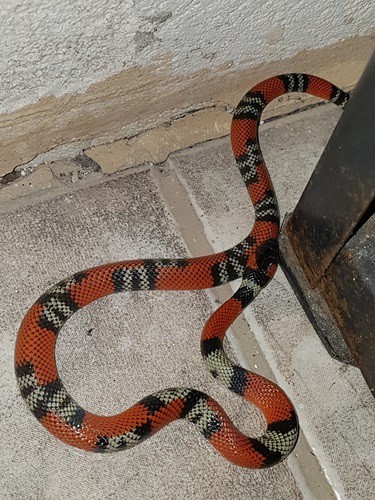
A common species in southeast Brazil and Paraguay. Guibe’s flame snakes measure up to 125cm, and prefer forest edges and more open areas. They don’t shun humanity, as their eggs have been found in house backyards in chicken enclosures, and beneath rocks by entrances to farmland.
Like the two mussuranas of this list, Oxyrhopus guibei is a constrictor which asphyxiates its prey. Yet this doesn’t give them an impenetrable armour, as they often fall victim to predators such as laughing falcons, plush-crested jays, and Aesculapian false coral snakes.
At under 40cm, Guibe’s flame snake eats reptiles exclusively, whereas rodents dominate at over 40cm. In a 1995 study, they skipped constriction for lizards, and swallowed them alive, headfirst. Guibe’s flame snakes have no time for stealth and patience. They simply pursue rodents as they move, before applying a sudden hold of coils. They occasionally eat geckos, but struggle to see through their carefully crafted camouflage.
This species mimics coral snakes for its protection, with alternating black-white bands followed by wide spaces of red. It almost gets every detail correct, but it seems to have made one critical error: the black-white bands don’t always match up on either side of its spine. Still, it’s probably enough to fool hungry birds part of the time.
| 10 | Chaco sepia snake |
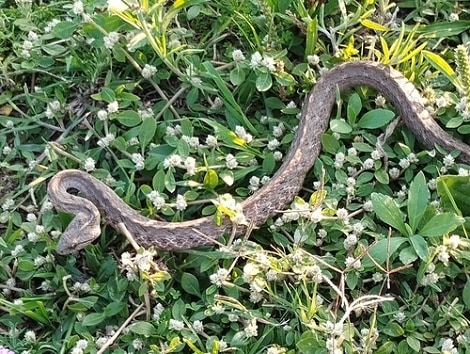
A snake with a rounded snout which rarely exceeds 80cm. The Chaco sepia snake (Dryophylax chaquensis) is one of Paraguay’s shier, yet smarter snakes, which lurks under the surface and hopes that nobody notices their existence. It’s also known as the Chaco mock viper, for its grey-brown alternating patterns, which lack any trace of bright colour.
Dryophylax chaquensis feeds exclusively on frogs and toads, and will turn up its nose at geckos or mice. The Chaco sepia snake seizes frogs by their back, then keeps them in a tight mouth hold for 15-20 minutes, to gradually inject a weak venom, before finally swallowing. This snake dislikes having live frogs hopping around in its stomach (unlike India’s checkered keelback). Their favourite prey include the Matto Grosso oval frog and Chaco tree frog. Chaco sepia snakes are believed to opportunistically grab whichever frogs are most abundant in any particular area.
Top locations for this snake are dry forest (51% of sightings), wetlands (16%), wet savannahs (14%) and marshes (10%). They have a tidy, moderately sized range, including southwest Brazil, far northern Argentina, and most of Paraguay.
